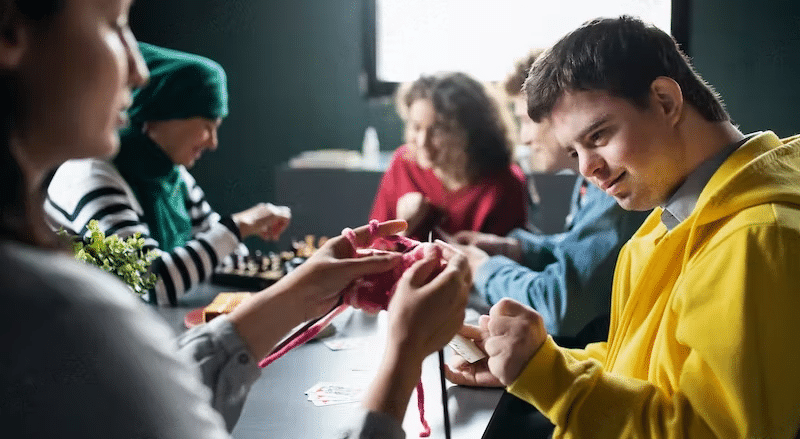What is the difference between diversity & inclusion?
In the digital age, it is no longer acceptable to think of diversity and inclusion as “nice to have”. It is an integral part of our society, and we need to be able to show that in our workplaces. We must embrace diversity and inclusion as a necessity to be successful in the future.
Diversity is a concept that can be defined as an organisation of people from different cultural backgrounds feeling accepted within the same workplace environment. Diversity can also mean that different people from various genders should work together without problems or conflicts. Inclusion does not necessarily mean equal opportunities for everyone, regardless of gender or race. It means that everyone has equal rights in terms of access and opportunity for success within the workplace – whether they are men or women, white or black, heterosexual or homosexual etc.
Inclusion is the act of entering a relationship with others. Whether in a romantic, family or friendship relationship. It is about treating people as individuals, not just as group members. It is the presence of a particular group, for example, people with disabilities. And we recognise them as an individual. Inclusion also requires understanding how to achieve it through diverse recruitment practices and processes. We must ensure that we not only recognise differences but also accept them with an open mind.
Understanding One Another and Recognising Our Differences
Equality
Equality is the principle that all people are equal. Each of us comes with a set of skills and talents that we can use to achieve our goals.
Most people hold equality in high regard, and it has brought about a lot of social progress over the years. However, it is essential to realise that equality isn’t always the case. We can all agree on equality, but it’s not always applied equally – especially if you’re not white or male. The problem lies in how we define equality and how it’s achieved.
Diversity
Diversity is a value that we should all strive to achieve. However, how it is defined and discussed in our society could be more optimistic. It’s time to change this. We will discuss what diversity means in the workplace and how it can be achieved.
Why is diversity & inclusion in the workplace Important?

Diversity and inclusion in the workplace are hot topics in the United States. Everyone needs to be able to work at their best and be treated equally in the workplace. The best workplaces should not discriminate against anyone because of gender, gender identity, race, culture or religion.
A workplace is where we are all equal in the eyes of the law and the federal workforce. This is an idea that has been at the core of the leadership of our society for companies. However, it is becoming increasingly challenging to achieve this equality in practice. This is because many women and minorities in the employee network find it challenging to get a job in member firms of specific fields due to their gender or race. The lack of diversity in employees can severely affect the quality of work produced and how well we as a society make decisions.
There are different ways to achieve that goal. The most popular method is through the promotion of women and minorities in the workplace. But that can only happen if they are given equal opportunities and chances to succeed by creating a more diverse workforce through an inclusive culture and diverse backgrounds of diverse talent. Having a diverse and inclusive workforce is vital to achieving equity and equal opportunity. In the past, diversity was not a significant issue in the workplace.
A diverse team is essential, especially as we see that diversity also accumulates different perspectives leading to better productivity, engagement, and innovation outcomes to achieve inclusive leadership.
Diversity and inclusion are important to the workplace because it helps people to be more productive and creative. But, diversity and inclusion in the workplace have a lot of challenges.
Conclusion
We should not consider diversity and inclusion as an issue only for the elite. Everyone needs to be included in society and in our work environment. The world we live in today is very different from the one we lived in a century ago. We need to make sure that everyone feels welcomed, included and respected. We are all on the same side of different coins. It is time to celebrate our individuality and to recognise that although we are different, there is always beauty in togetherness. Diversity and inclusion fosters a more productive workplace for employees. Employees are able to perform at the top of their capabilities if they feel included, heard, and seen.
Was this article helpful? Let us know in the comments.
FAQs
What are the four types of diversity?
Diversity is a major issue in today’s society and workforce. It breaks down into four major levels: racial diversity, gender diversity, age diversity and sexual orientation or gender.
What are examples of diversity and inclusion in the workplace?
Diversity can mean different things to different people. In other words, diversity is not necessarily about appearance or gender. It’s a collection of many very different things that are all important to the workplace.
What are ways to promote diversity?
In a world dominated by white males, it is important to encourage and support women and minorities to join the workforce. While we can’t change the world for them, we can make their lives easier by giving them access to better opportunities.

